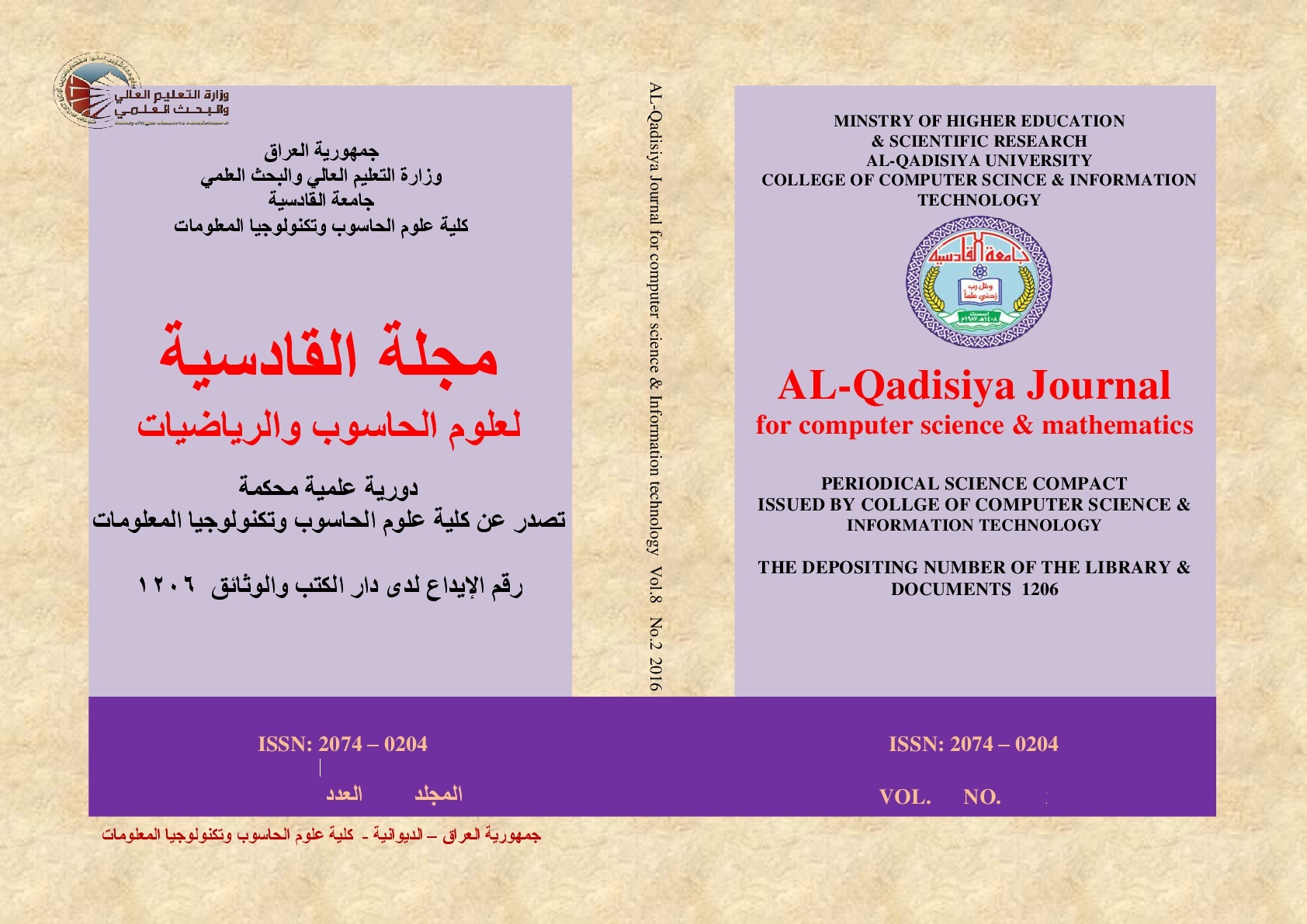Game Theory Applications in Cybersecurity: An Operations Research Approach
DOI:
https://doi.org/10.29304/jqcsm.2025.17.22213Keywords:
Game theory, cybersecurity, operations research, Nash equilibrium, Stackelberg games, stochastic optimizationAbstract
Modern cybersecurity challenges require dynamic defense mechanisms able to waiting for antagonistic strategies at the same time as balancing operational constraints. This study unifies recreation theory and operations studies (OR) to create an adaptive framework for countering sophisticated cyber threats, empirically tested the use of the QRID-2025-Dataset-Small.Csv. By synthesizing Stackelberg games (modeling hierarchical attacker-defender interactions), evolutionary video games (taking pictures long-term antagonistic evolution), and signaling games (addressing deception) with OR methods—including blended-integer programming and Markov choice processes—the framework optimizes useful resource allocation and selection-making beneath uncertainty. Empirical results spotlight a 65.7% discount in superior chronic danger (APT) breaches and a three.41 go back on investment (ROI) for ransomware mitigation, surpassing rule-based totally and machine mastering benchmarks. The technique achieves linear scalability ((O(n))) and adapts to heterogeneous environments, inclusive of high-noise situations (30% of instances), overcoming barriers of static or fragmented solutions.
The take a look at contributes a pioneering integration of game-theoretic equilibrium evaluation with stochastic OR optimization, proven towards real-global value metrics (CostTime, CostMoney, CostEnergy) derived from 500 assault simulations. Practical programs are demonstrated in time-touchy sectors like healthcare and commercial manage structures (SCADA), where fee-effective speedy response is critical. By merging strategic adversary modeling with operational efficiency, this work advocates for future improvements in AI-driven actual-time threat prediction and behavioral technological know-how to beautify human-centric protection strategies. The framework gives a scalable, replicable model for protecting essential infrastructure in opposition to escalating cyber risks, urging cross-disciplinary collaboration between academia and enterprise.
Downloads
References
Almeida, G. & Vasconcelos, F. (2023). Self-healing networks: Adaptive responses to ransomware attacks.
Beebe, N. H. (2023). A Complete Bibliography of Publications in Algorithms.
Bouramdane, A. A. (2023). Cyberattacks in smart grids: challenges and solving the multi-criteria decision-making for cybersecurity options, including ones that incorporate artificial intelligence, using an analytical hierarchy process. Journal of Cybersecurity and Privacy, 3(4), 662–705.
Butt, M. O., Waheed, N., Duong, T. Q., & Ejaz, W. (2024). Quantum-Inspired Resource Optimization for 6G Networks: A Survey. IEEE Communications Surveys & Tutorials.
Cherchye, L., De Rock, B., Saelens, D., Verschelde, M., & Roets, B. (2024). Productive efficiency analysis with unobserved inputs: An application to endogenous automation in railway traffic management. European Journal of Operational Research, 313(2), 678–690.
Cunningham, J. D., Aved, A., Ferris, D., Morrone, P., & Tucker, C. S. (2022). A deep learning game theoretic model for defending against large scale smart grid attacks. IEEE Transactions on Smart Grid, 14(2), 1188–1197.
Gan, C., Lin, J., Huang, D. W., Zhu, Q., Tian, L., & Jain, D. K. (2024). Equipment classification based differential game method for advanced persistent threats in Industrial Internet of Things. Expert Systems with Applications, 236, 121255.
Gonçalves, V. B. (2020). Uncertain risk assessment and management: case studies of the application of the precautionary principle in Portugal. Risk Analysis, 40(5), 939–956.
Huang, L., & Zhu, Q. (2020). A dynamic games approach to proactive defense strategies against advanced persistent threats in cyber-physical systems. Computers & Security, 89, 101660.
Huang, Q., Liu, Y., Wang, L., Sun, P., Li, J., & Xu, J. (2023). A blockchain-enabled coalitional game framework for carbon emission trading. IEEE Transactions on Network Science and Engineering.
Kahneman, D., & Tversky, A. (2013). Prospect theory: An analysis of decision under risk. In Handbook of the fundamentals of financial decision making: Part I (pp. 99–127).
Khalid, M. N. A., Al-Kadhimi, A. A., & Singh, M. M. (2023). Recent developments in game-theory approaches for the detection and defense against advanced persistent threats (APTs): a systematic review. Mathematics, 11(6), 1353.
Kornyo, O., Asante, M., Opoku, R., Owusu-Agyemang, K., Partey, B. T., Baah, E. K., & Boadu, N. (2023). Botnet attacks classification in AMI networks with recursive feature elimination (RFE) and machine learning algorithms. Computers & Security, 135, 103456.
Lu, J., Chen, K., Zhuo, Z., & Zhang, X. (2019). A temporal correlation and traffic analysis approach for APT attacks detection. Cluster computing, 22, 7347–7358.
Manshaei, M. H., Zhu, Q., Alpcan, T., Bacşar, T., & Hubaux, J. P. (2013). Game theory meets network security and privacy. Acm Computing Surveys (Csur), 45(3), 1–39.
Maqbool, Z., Aggarwal, P., Pammi, V. C., & Dutt, V. (2020). Cyber security: effects of penalizing defenders in cyber-security games via experimentation and computational modeling. Frontiers in Psychology, 11, 11.
Oishi, K., Sei, Y., Tahara, Y., & Ohsuga, A. (2020). Semantic diversity: Privacy considering distance between values of sensitive attribute. Computers & Security, 94, 101823.
Pawlick, J., Farhang, S., & Zhu, Q. (2015). Flip the cloud: Cyber-physical signaling games in the presence of advanced persistent threats. In Decision and Game Theory for Security: 6th International Conference, GameSec 2015, London, UK, November 4-5, 2015, Proceedings 6 (pp. 289–308). Springer International Publishing.
Roy, S., Ellis, C., Shiva, S., Dasgupta, D., Shandilya, V., & Wu, Q. (2010, January). A survey of game theory as applied to network security. In 2010 43rd Hawaii international conference on system sciences (pp. 1–10). IEEE.
Sarker, I. H., Kayes, A. S. M., Badsha, S., Alqahtani, H., Watters, P., & Ng, A. (2020). Cybersecurity data science: an overview from machine learning perspective. Journal of Big data, 7, 1–29.
Shen, S., Cai, C., Shen, Y., Wu, X., Ke, W., & Yu, S. (2025). Joint Mean-Field Game and Multiagent Asynchronous Advantage Actor-Critic for Edge Intelligence-Based IoT Malware Propagation Defense. IEEE Transactions on Dependable and Secure Computing.
Shen, Y., Shepherd, C., Ahmed, C. M., Shen, S., Wu, X., Ke, W., & Yu, S. (2024). Game-theoretic analytics for privacy preservation in Internet of Things networks: A survey. Engineering Applications of Artificial Intelligence, 133, 108449.
Tushar, W., Yuen, C., Saha, T. K., Nizami, S., Alam, M. R., Smith, D. B., & Poor, H. V. (2023). A survey of cyber-physical systems from a game-theoretic perspective. IEEE Access, 11, 9799–9834.
Wang, K., Perrault, A., Mate, A., & Tambe, M. (2020, May). Scalable Game-Focused Learning of Adversary Models: Data-to-Decisions in Network Security Games. In AAMAS (pp. 1449–1457).
Zhang, W., Yang, D., Wu, W., Peng, H., Zhang, N., Zhang, H., & Shen, X. (2021). Optimizing federated learning in distributed industrial IoT: A multi-agent approach. IEEE Journal on Selected Areas in Communications, 39(12), 3688–3703.
Downloads
Published
How to Cite
Issue
Section
License
Copyright (c) 2025 Khader S. Tanak

This work is licensed under a Creative Commons Attribution-NonCommercial-NoDerivatives 4.0 International License.













